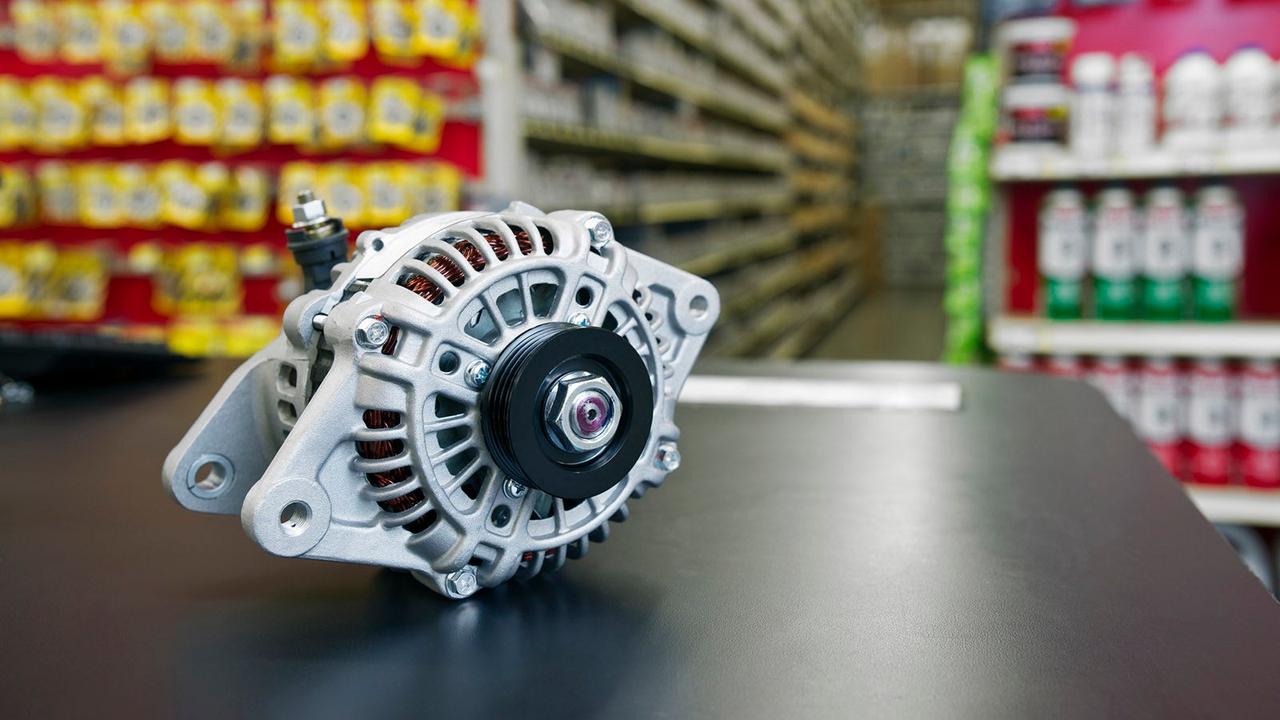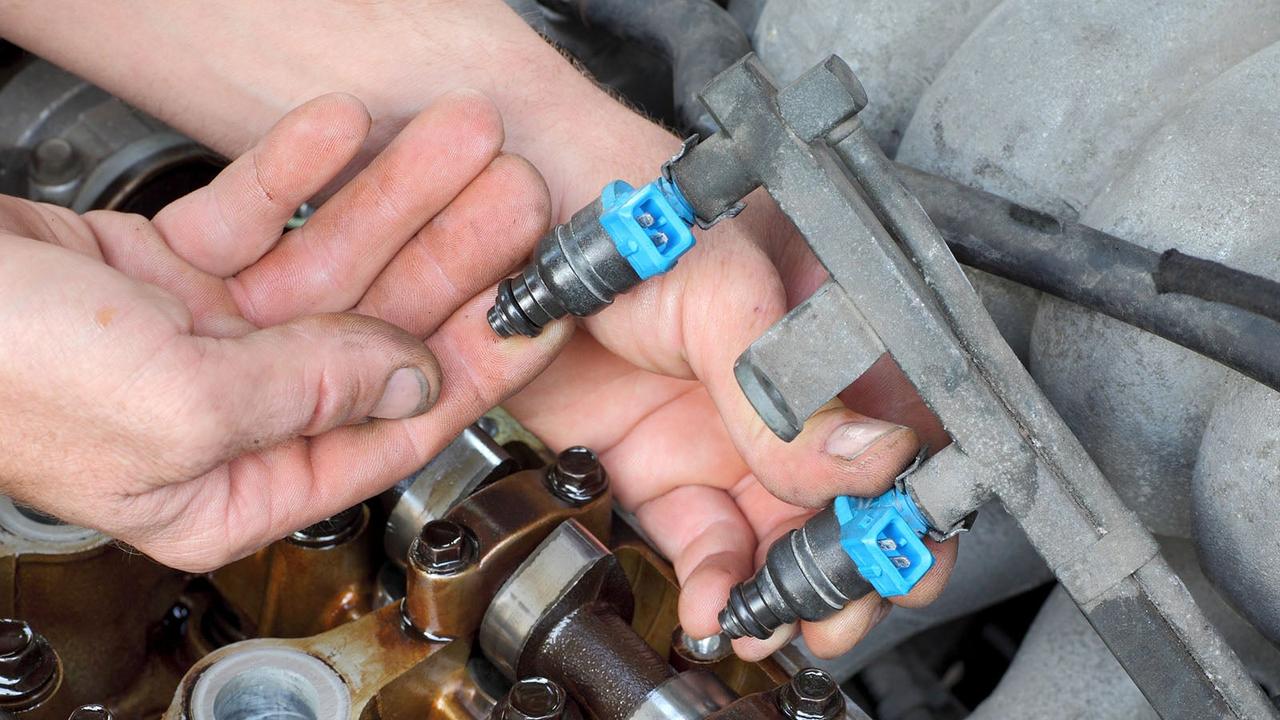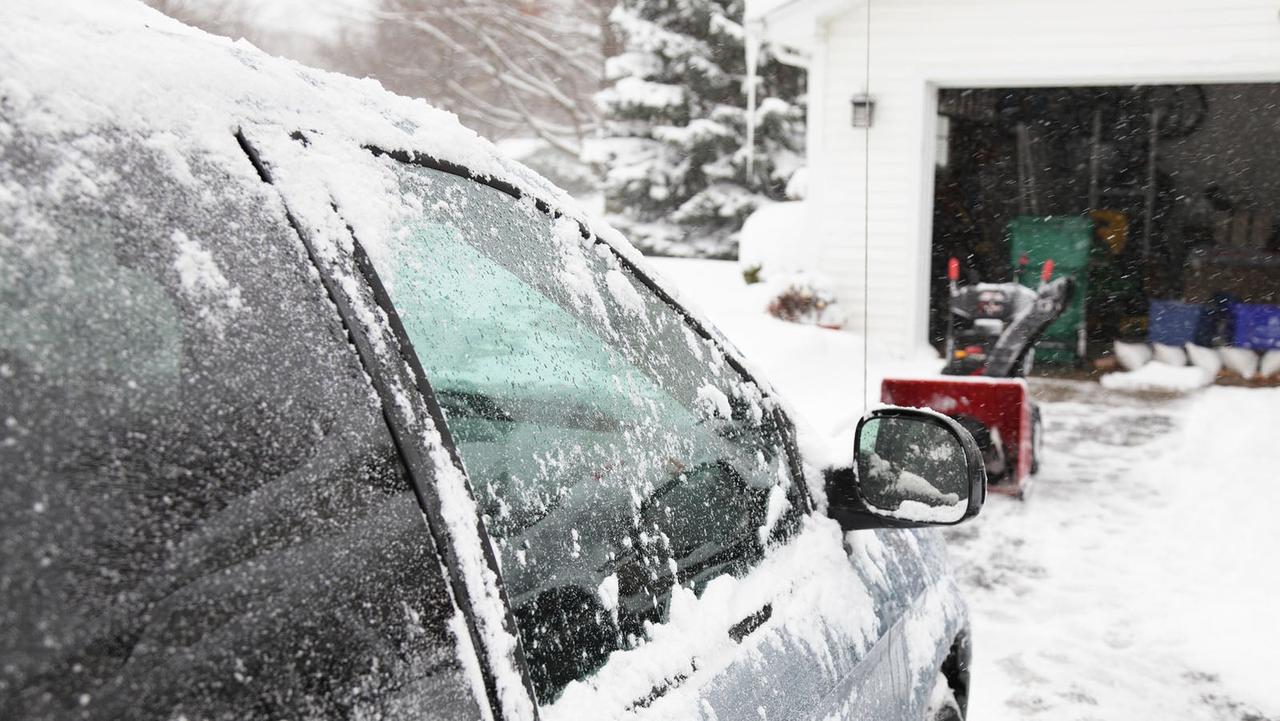You might love winter – crisp mornings, festive cheer and the chance of snow – but your car probably hates it!
Damp, cold weather isn't much fun for an internal combustion engine, and the strain of getting your engine spinning in chilly climates can lead to your car failing to start at all.
The most common reason for cars not starting in cold weather is a weak battery – but there are plenty of other causes too. Read on to find out why your car's not starting in cold weather, and how to get it going again.
Reasons why your car won’t start in cold weather
Car battery

Cold temperatures slow down all the chemical reactions that take place in a battery to create power, resulting in a drop in current, which in turn means your battery will struggle to start your engine.
When you start your car, power is drawn from the battery to drive the starter motor, which spins the engine. At the same time, the battery also powers the fuel pump and, on petrol cars, ignites the spark plugs – all of which ultimately causes the engine to fire into life.
If your battery is weak, undercharged or faulty, it can fail to supply enough power to any of these elements and prevent your car from starting. Clues this may be the case include if your car’s electrics turn on but the starter motor sounds weak or doesn’t attempt to spin the engine at all. Other signs of a failing battery include on-board electrics such as lights, windows and your infotainment system either not working properly or not working at all.
If your battery is weak, you can try these techniques to get your car started anyway:
- In a manual car, press the clutch when starting the engine – this will reduce some of the strain on the starter motor by disconnecting the gearbox’s input from the engine
- Turn off electrical accessories such as heating, headlights and the radio – each of these can draw electrical power, reducing the amount available to start the car
- Use starting fluid – these are available in spray cans from car accessory stores and contain ether which, when sprayed into an engine’s intake, can help fire it up
What to do if my car battery is flat?

If your battery is flat, the best method to get you on your way is to jump-start your vehicle. To do this, you’ll need a set of jump leads and access to another working vehicle. Be careful when connecting the two cars together – start with the red cable on the positive battery terminals, then carefully connect the negative terminal of the healthy car to a bare-metal grounding point on the car you’re trying to jump-start.
As an alternative if you don’t have access to another car, you can use a battery charger or jump pack – these can usually be bought from car accessory stores. If none of these solutions is available to you, your next best bet is to contact your breakdown cover.
The lead-acid 12V batteries in cars aren’t designed to be discharged very far and can quickly become damaged if they’ve been left uncharged for too long.
If your battery continues to show signs of weakness after jump-starting your car, it'll need replacing.
My car won't start but the battery is good?
If you’re confident your battery isn’t the culprit behind your car failing to start, the next most common failure points are:
- A clogged fuel filter
- Problems with coil packs or ignition leads
- Wiring problems between the starter motor and ignition
- Mechanical failure of the starter motor
- Faulty spark plugs
Alternator

Your alternator is the part that keeps your car’s battery charged when the engine is running. If your battery is new and seems to be in good health but still keeps going flat, this would indicate an issue with the alternator. Another clue that might point to an alternator problem would be a car that dies shortly after being jump-started, because the engine is not recharging the battery.
Alternators can be quite tricky to fit as they’re often buried deep inside the engine bay. So, in most cases, it’s best to get a qualified auto technician to diagnose the issue and replace the part if needed.
Starter motor

The starter motor uses power from the battery to spin the engine and get your car started. Many modern cars are now fitted with a stop-start system to make them more economical so, as a result, modern starter motors have been beefed up to cope with these demands. Nevertheless, failures do still occur and you won’t be going anywhere if your starter can’t spin your engine.
How do I know it’s a problem with the starter motor?
A starter motor fault is probably the easiest to diagnose. When you try to start the car, this will cause a ticking or clicking sound and the engine will not start.
Starter motors, like alternators, tend to be buried in the engine bay and aren’t especially straightforward to replace. If you think you have a starter motor problem, we’d suggest taking your car to a service centre to be repaired by a professional.
Fuel system

Fuel systems can become contaminated with water over time and, once the cold weather hits, that water can freeze.
This can lead to failed starting as the fuel lines that feed the engine are quite narrow so, if they get blocked by ice, your engine won’t get any fuel. Even if you’re able to start your engine in this case, you might encounter performance issues such as juddering when accelerating.
There are additives available to reduce water contamination in fuel but, if the problem is severe, you may need to call a professional to flush the system or replace any faulty parts.
Are there ways you can help your car start when it's cold?

If you often face extremely cold temperatures, you might want to consider a car cover to provide a little extra insulation when the vehicle is parked. If you’re fortunate enough to own a garage, we recommend parking your car in there to save exposing it to the winter elements.
For drivers who live in extremely cold climates, you might want to consider fitting an aftermarket engine block heater to your car. This will help get your engine much closer to its operating temperature before trying to start it.
Another recommendation is to carry out regular maintenance checks yourself at home as the temperatures drop. We’ve found that ‘FORCES’ is a handy mnemonic to help remember the most important checks to carry out:
- Fuel
- Oil
- Rubber (tyres)
- Coolant
- Electrics
- Screen wash
My car won't start when cold but starts when it's warm
Some drivers may find their car refuses or struggles to start when it's cold, but can successfully get going if the outside temperature is a little warmer. By far the most likely culprit in this context is the battery, even if it's been replaced or checked recently.
Your engine is harder to crank over when it's cold, and your car's 12V battery will struggle to send as much current to the starter motor as it would in warmer weather. Both of those factors put more strain on the battery and engine-starting system, which can lead to weak cranking or no cranking at all.
If you find your car struggles to start in the cold, you can visit a local service centre or car-parts store to get your battery's output measured. Some locations will also be able to test your car's charging circuit to make sure the alternator is sending power back into the battery.
Why won't my car start in the cold FAQs
Get more winter driving tips from Motorpoint
We asked racing driver Rebecca Jackson to give Motorpoint customers top tips for what to do in a slide. For more handy tips when driving in the cold, check out how to give your car a winter check and our explainer for how to drive in the snow. Plus, find out whether you should fit winter tyres to your car.



































